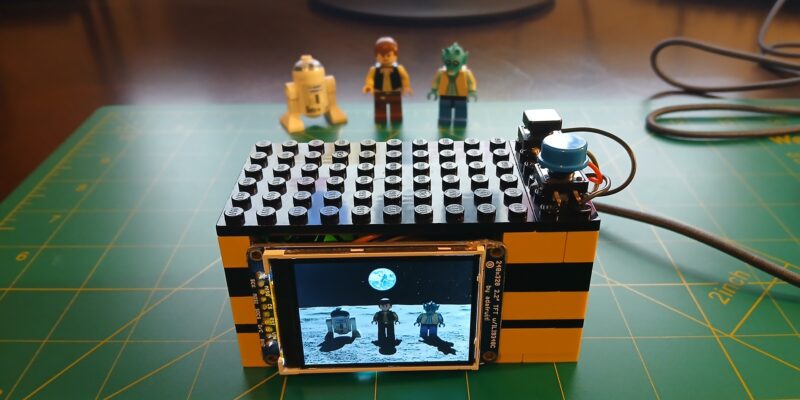Plasma Stick 2040 W (Pico W Aboard)
By Phil King. Posted

With a pre-soldered Pico W on board, the Plasma Stick 2040 W (£12) is designed as an easy-to-use controller for addressable NeoPixels (aka WS2812B / SK6812 LEDs). Three screw terminals offer a simple and secure connection method for your LED strip’s wires. Note that if the strip has female connectors, as ours did, you may need female-to-male jumper wires.
Advertisement
Christmas is coming – keep Santa on the right track with our Raspberry Pi gift guide!
To get you up and running quickly, the Plasma Stick 2040 W is preloaded with Pimoroni’s own brand of MicroPython firmware, complete with a fair few example programs, including fire, rainbow, snow, and sparkle effects. These can easily be adapted to suit the number of LEDs in your strip. Alternatively you can code in C/C++, or flash Pico W with CircuitPython to make use of Adafruit’s LED Animation library.

Plasma programming
The MicroPython code examples are based around Pimoroni’s Plasma library, as used for the firm’s Plasma 2040 controller – although unlike that board, the Plasma Stick can’t be used with DotStar/APA102 LEDs. The colour of individual LEDs can be set using RGB or HSV, along with the overall brightness level.
Just connect to a computer via USB to power the Plasma Stick’s Pico W and run/edit the code. As usual, to get a program to run automatically on boot-up, save it as main.py and then connect a standard USB power source, such as a power bank.

Pico W’s Wi-Fi connectivity adds extra possibilities for your lighting projects. Code examples include responding to the current Cheerlights colour (see @cheerlights on Twitter) or weather conditions sourced from the web. You can also take readings from any sensor attached to the Plasma Stick’s Qwiic/STEMMA QT port.
Verdict
8/10
While you could always use a plain Pico W to control LED strips, the Plasma Stick makes it simpler and has the bonus of a Qwiic/STEMMA QT port and reset button.
Specs
Features: 3 × screw terminals (5 V, ground, data), reset button, Qwiic/STEMMA QT port Dimensions: 67 × 22 × 12 mm

When not editing books and contributing to The MagPi, Phil enjoys playing the piano (badly), astronomy, and watching classic sitcoms.
Subscribe to Raspberry Pi Official Magazine
Save up to 37% off the cover price and get a FREE Raspberry Pi Pico 2 W with a subscription to Raspberry Pi Official Magazine.
More articles
Project Gigapixel
With a medium format 6×7 lens, this camera could theoretically be capable of producing a 3.3 gigapixel image
Read more →

Banamera AI camera
Lego bricks are perfect for prototyping
Read more →

Meet Phil Hutchinson: element14 community organiser
Phil has always been “the technical guy”
Read more →
Sign up to the newsletter
Get every issue delivered directly to your inbox and keep up to date with the latest news, offers, events, and more.
